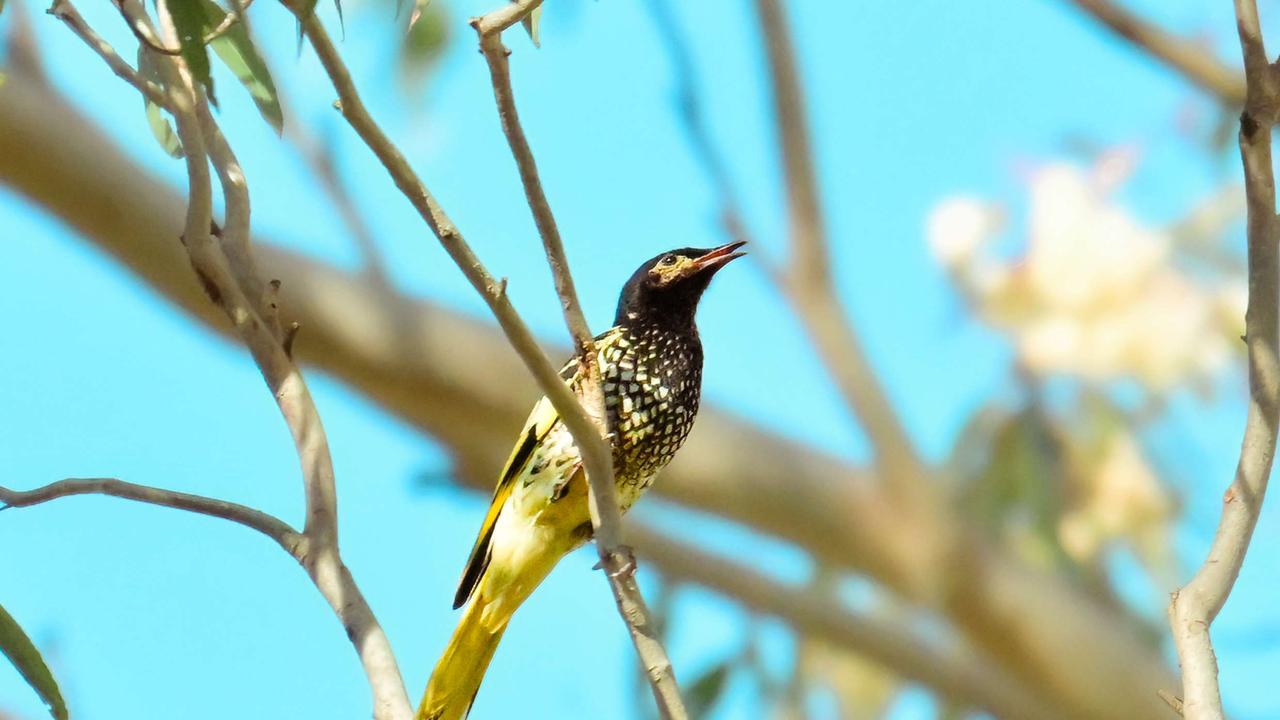Rare regent honeyeater spotted by Toowoomba birdwatchers at Highfields Falls bushland
Just weeks after the world’s rarest parrot was discovered in Toowoomba, an even rarer feathered creature has been spotted north of the city — and it’s causing a stir in the birdwatching community.
Pets and Wildlife
Don't miss out on the headlines from Pets and Wildlife. Followed categories will be added to My News.
One of Australia’s rarest birds has been spotted in bushland just north of Toowoomba for the first time in more than a century — a sighting bird-watchers are calling “significant”.
Three members of the critically endangered regent honeyeater, also called the warty-faced honeyeater, are currently feeding in the canopies of Highfields Falls bushland, not far from the New England Highway.
It comes just weeks after dozens of bird-watchers were drawn to Picnic Point to catch a glimpse of the equally-endangered swift parrot, which was spotted near Tobruk Drive.
The honeyeater, which is about the size of noisy miners, is usually found in NSW and Victoria but was once common from Rockhampton to Adelaide.
Avian experts believe as few as 300 are left in the wild, despite successful breeding programs by Taronga Zoo.
Their population decline has coincided with the loss of habitat like the ironbark and yellow box trees, which not only act as a food source but also protection from larger and more aggressive birds like wattlebirds and noisy miners.

Ornithologist and BirdLife member Scot McPhie said the migratory honeyeater has not been seen in the region since the early 1900s, as evidenced by a specimen at the Crows Nest Library.
“These have never been sighted in the Toowoomba region before, except for maybe something in the early 1900s,” he said.
“There is one in the bird cabinet in Crows Nest Library, which was collected in the Highfields area around the late 1800s.
“It’s not just the loss of the big trees, it’s the loss of the scrub for protection.
“Their chicks are predated on by butcherbirds, currawongs and kookaburras who can get easier access because of less understorey and scrub.
“So the loss of habitat is changing the balance and way the different birds are interacting.”
News of the honeyeater’s appearance in the state saw as many as 200 people head to Highfields Falls to spot the bird.
Mr McPhie said he’d love to see more people involved in “birding”, either casually or with groups like BirdLife or the Toowoomba Bird Observers.
“There’s a hell of a lot of people into birding — for me it’s about conservation, but others are competitive,” he said.
The birds are expected to remain in the area until August, when they will fly down south for breeding.

Mr McPhie said he believed they would be back.
“Honeyeaters need to learn how to migrate from others, it’s about learning where the trees are,” he said.
“They will remember the group of trees that they like, so it’s about keeping the population numbers up.”









